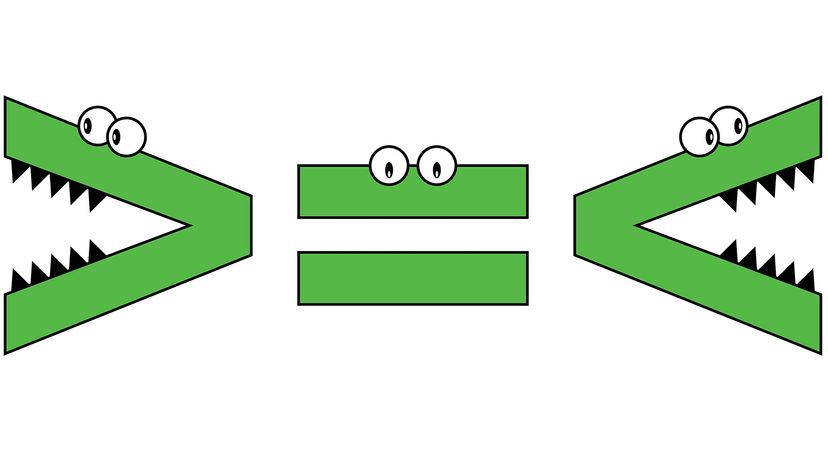While the concept is straightforward, if you're not used to the greater than and less than symbols, it can be tricky to recall which one means which. Fortunately, there are some simple, easy-to-remember tricks that can help identify which symbols fits in a given context.
1. The Alligator Method
This trick has a nice visual component. If you think of the greater than or less than symbols as the open mouth of an alligator, you can imagine that the alligator's mouth is going to be open towards the bigger number, as if it's about to eat the greater value. Take the following example:
Here, the alligator mouth is open wide towards the second number, clearly indicating that 83 is greater than 41.
2. The L Method
If you rotate the less than symbol slightly, you get a capital letter "L." This makes the translation into spoken English very easy, since it tells you how to read the inequality.
This example can be read as "15 is less than 33." If you look at the less than sign as a tilted or squashed L, you can see how the sentence ought to read. The second number is the greater number, and the first number is has the smaller value.
3. The Crescendo Method
This method is for the musically inclined. You may have noticed that the greater than and less than symbols resemble the decrescendo and crescendo symbols you'll find on sheet music.
In math, the symbol widens toward the larger value, just as the (de)crescendo symbols widen toward the louder volume.
This example can be read as "612 is less than 680." If you look at the less than sign as you would in music, you remember that the arrow in this direction means the volume will grow louder — or in this case, it will grow larger, towards the bigger number.
